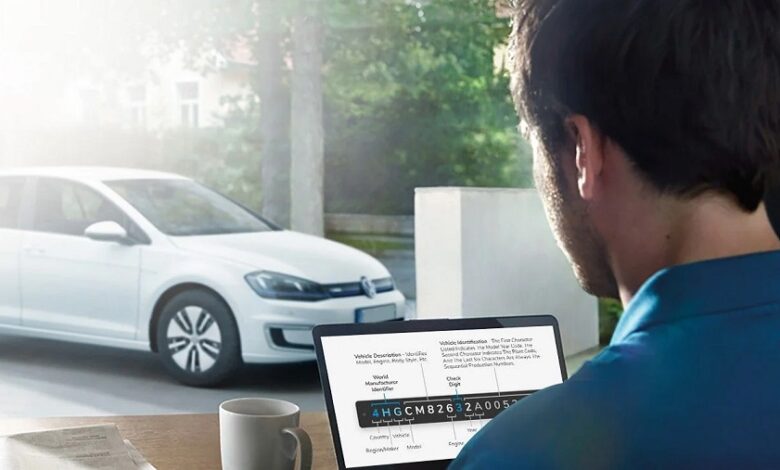
A vehicle identification number is just as unique as human identification ways. Simple data like your fingerprint or ID number can disclose a lot about you, from when you were born to what you’re doing right now.
The same is true for cars when the VIN is used (Vehicle Identification Number). It’s a unique number that is assigned to each car that aids in tracing its history. This article is for you if you are new to these matters but own a car or plan to buy one.
We’ll go over what the number means and how to read it to find out what the secret information is.
The VIN Highlight
VINs have been used to identify cars since the 1950s. Because there was no standard at the time, the numbers were highly unpredictable. The sequence was always chosen by the makers, and each numbering was unique.
There was a need for standards in 1981, which led to the creation of the 17-digit character code. Something is clearly wrong if you locate a modern car with less than 17 characters.
There is a requirement for uniqueness here because it is the number that will identify a car. Even though they are the same model, no two cars have the same VIN. You need to know all of the details about your car, which is why the number should be unique to it.
Let’s look at how to read a VIN and what else it might tell you now that you know what it is.
Reading the Vehicle Identification Number
If you enjoy working with cars, you may already know where to obtain the VIN. If not, it’s not difficult to figure out once you know where to look. Let’s check where we can get the VIN before we read it.
– The registration records of the automobile
– Cards of insurance
– Logbook
– On the driver’s side of the windscreen, towards the dashboard
– On the pillar of the driver’s door (You can also check on the passenger door pillar too)
– On the spare wheel
– Behind the scenes
– In the engine compartment
On the electronic system of the vehicle (Modern cars have adopted this move due to security reasons) Concerning the transmission network (Recent cars will have it there)
Now you know where to look for the VIN. Checking all of the sections for verification purposes is a good idea. In each of these places, the number should be the same. If you discover a discrepancy, you should contact the car dealer for more details.
Once you’ve got it. Write it down or take a photo of it, then go to a portal that offers VIN lookup services. They aid in the decoding of characters and expose what is concealed inside them. More important, the car’s history must be revealed.
If the vehicle in question is a used car, you need also be aware of this. Here is an approximation of what you should see from the decoded information if you use a trusted source to look it up.
WMI (World Manufacturer Identifier)
The WMI is indicated by the first three numbers. That is, they will assist in determining the car’s origin. The region is denoted by the first letter. The continent-based letters are as continues to follow:
– Africa (A-H)
– J-R: Asia
– Europe (S-Z)
– North America (numbers 1–5)
– 6-7: Australia and New Zealand
– South America (8-9)
The manufacturer will be indicated by the second digit, while the division will be represented by the third.
The Vehicle Description
This is where you obtain the car’s specifications from the fourth to the eighth character. Size, body style, transmission, engine, and other factors are among them. Let’s look at what they mean.
Fourth Character: This is where you’ll find model-specific features, such as safety features.
The model’s series is also given as a letter in the fifth character.
Characters six and seven: This is where you learn about body types and styles. These are the characters who will help you in learning whether you have a hatchback or a convertible.
Eighth Character: This is where you obtain the engine size, and a letter, same as the fifth character. Since the car is specifically detailed for you, this is where you get details on the proper spare parts for your car between the fourth and eighth letters.
VIN Verification
Because it is the checking digit, the ninth digit is extremely important. It will inform you whether the VIN is genuine or not. It uses a complex mathematical formula with a five-step procedure. You’ll need to use an online decoder because of this character.
The Year of Manufacture
The model’s year is found on the eleventh page. It could be a number or a letter. Between 1980 and 2000, the cars only had letters A to Z, apart from I, O, Q, U, and Z. This is to avoid any confusion with the numerals 0, 1, and 2.
Cars had numbers 1 to 9 from 2001 to 2009. We’ve been using alphabets again since 2010, and we’ll continue to do so till 2030. If you buy a car produced in 2020 or 2021, you will receive a L or M.
The Manufacturer’s Plant
This is the fault of the 11th character. It’ll show you where the car was put together before being sent.
The Serial Number
You obtain it from the 12th to the last character. It’s the number assigned to the car on the assembly line. You might not need it very often, but if you need to know if the car was changed in any way during production.
Final Word
You may discover more about the history of the figures in addition to what they represent. If the car is brand new, this may not be an issue, but there will be more to learn about old cars. You’ll need to use a powerful web decoder to get all of that information.
Before feeding the number, make sure the decoder you’re using supports your region. If you need to double-check the information, you can decode it on several systems. You may comprehend the essence of the characters, but you will need help in interpreting them to avoid wasting time.




